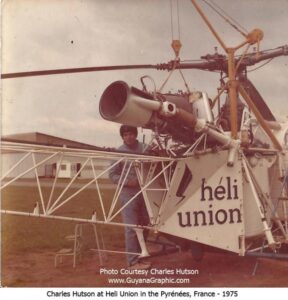
In September of 1961 I joined British Guiana Airways (known then as BG Airways) a department of the Ministry of Communication and Works. The Ministry had advertised to train persons who were interested in pursuing studies to become Licensed Aircraft Engineers at an institution in the United Kingdom (AIR WORKS Perth, Scotland).
For reasons that were never disclosed at the time the scholarship programme never got off the ground, but Dharamdas Dookhie, Charles Dundas, (MS2 students for the (GTI) Government Technical Institute) Gordon Alleyne (MVD1- 1962) and myself (MS3) graduates were employed.
At that time the then Engineering Manager was Mr. Sydney Kennard, a Guyanese who served in the ROYAL AIR FORCE (UK), he held licence#4 and was the only person with the “B” licence which allowed the then BGA Engineering to undertake many of the works on the fleet of aircraft that were being flown at the time, the Chief Engineer (Ramp) was Mr. George Loy. That environment was responsible for producing artisans and licenced engineers with a wide range of specialist skills and unmatched abilities that has served the Aviation industry in Guyana and abroad with distinction.
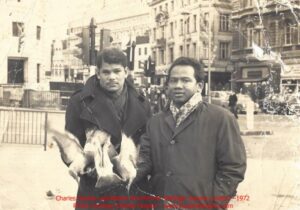
The fleet consisted of the following aircraft types:
- Grumman Goose (G21A) powered by the P&W R 985 Radial engines
- Douglas DC3-(C47) powered by the P&W R1830-90D & 94 Twin Radials
The Grumman Goose were amphibian aircraft, (THREE) at the time, and were stationed at the Ramp Ruimveldt where the Demerara River served as the main take-off and landing arena. The DC3 (C47) (THREE) were land planes operating out of Atkinson Field renamed Timehri and now known as Cheddi Jagan International Airport.
The Engineering structure and personnel from the other Departments are listed below with brief notes:
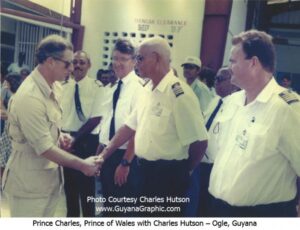
SH Kennard – (Licence #4): Engineering Manager Responsible for both bases, Ramp Ruimveldt and Atkinson Field. Mr SH Kennard served with the Airline until the 70’s when he retired and migrated to Canada. Mr. Clarence Affoo, a Trinidadian and naturalized Guyanese who also migrated to Canada after retirement, served with him, and was the Engineer-in charge of the Atkinson Field operations
George Loy – (Licence #15): Engineer-in-Charge (Ramp) He was a natural, gifted both as an artisan and an Engineer. He, from the earliest had been responsible for most if not all of the modifications done to the G21A, developed the service tools and stands that were employed on a daily basis to service the aircraft both at the Ramp, Timehri and at Ogle where he was actively involved in the development of CAMS. Whenever difficult issues came up that often required innovation and pioneering into to virgin territory, George was the man to call upon for solutions. He was methodical, thoughtful and above all a master at putting everyone at ease with his irrepressible humor and storytelling. He earned the respect of everyone, he was humble, thoughtful and always ready to share his time and knowledge earned through hard work, study and dedication to his profession.
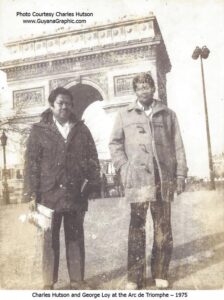
C. Austin – (Licence# A) -G21A: A gentleman, skilled in structural repairs and general maintenance, Claude always well attired, groomed epitomized the AVIATOR as a professional where only the best is to be expected. A person to be emulated as a leader and supervisor, a teacher.
M. A. Cox – (Licence #A&C)-G21A: Michael Allan Cox always affable, easy going, but extremely well trained and knowledgeable. Michael served in the RAF and his demeanor and general attitude towards others reflected the discipline that was part of the exposure he had in military life. He was a leader who cared and who parted ways very early after the Ramp operations shifted to Atkinson Field in 1969/70.
Jeremiah Li – (Licence#) A-G21A: Uncle Jerry as he was usually called was quite a character. He was a tough, rough and tumble sort of person. He was a Trinidadian by birth but married a Guyanese and settled here. Uncle Jerry also did his apprenticeship in the oil fields, consequently he was well trained and took great pains and time to teach us, albeit in his inimitable fashion. Many a day, Uncle Jerry would storm out of the Ramp at the beginning of the night shift, which started at 16:00 hrs, after having been irritated by Bianchini’s antics, and good natured trickery. It is a marvel that the old model Austin car that he drove remained on its wheels during his exit from the Ramp.
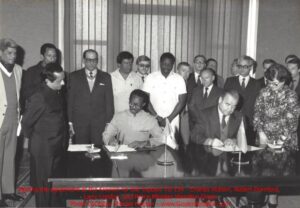
F Singh – (Licence X Elec.): Frank Singh if my memory serves me correctly was the first person to have been awarded the X electrical 9.1. He was well disciplined and went about the running of the Electrical bay and his work in general with an air of competence born out of a deep sense of knowledge. He made the early test consoles on which he conducted the tests that were necessary in getting his work done. He was affable and very approachable. He migrated to Canada before the Ramp operation moved to Atkinson Field
Grogan – (Licence X-R): He left very early in my tenure at the Ramp, but from all appearances he ran a very professional Radio maintenance Department along with Mr. Alstrom who took over from him and continued well into the introduction of the DHC6 Twin Otters. The Radio Department maintained the C47s at Atkinson field and ran and oversaw very efficient and highly trained and versatile radio operators in the persons of Subhan Ali, Kerr and DeJonge at the Ramp and Atkinson Field.
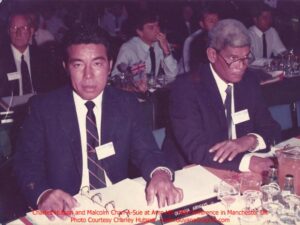
Senior Maintenance Personnel:
Eric Vanier: Skilled aircraft technician-Migrated to USA and continued to work with CHALKS an Operator of the Grumman Goose in Miami.
Thomas Pestano: Skilled aircraft technician- Migrated to the United Kingdom.
Victor Bianchini: Skilled aircraft technician- Deceased. Carried the work operations of Trans Guyana Aviation and was instrumental in pioneering its maintenance development to CHL and finally to CAMS.
Hamid Ali: Specialist structural repairs/sheet metal. Migrated to the USA; an artisan par excellence.
Tom Persaud: Aircraft line/ramp supervisor – Knowledgeable in all aspects of the Grumman operation and line maintenance. The foundation on which the Aviation Pioneers (H E Wendt and A.Williams) were able to launch and build the industry.
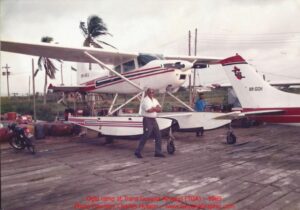
Gerald Hilliman and Paul Dookhoo: Dope and fabric specialists. These two were in a class by themselves, Gerald and Paul produced aircraft components covered in fabric that were masterpieces Their attention to detail, treatment of component structures in the preparation for covering, were lessons in professionalism that molded those of us who were fortunate to be under their influence .
The Technical Records department was at that time run by a very competent person by the name of Lenny Sankar. Lenny Sankar took pride in his work and provided a very high level of professional support to Mr. S. H. Kennard and the entire Organisation. He was the life line that oversaw the administrative functions of the entire Organisation kept moving and accomplishing its obligations smoothly and efficiently. Lenny trained many youngsters, and provided help and guidance with the legal aspects of aircraft maintenance to aspiring engineers like me, who were able to take over and meet the challenges of the future after he migrated to Canada in the mid-70s.
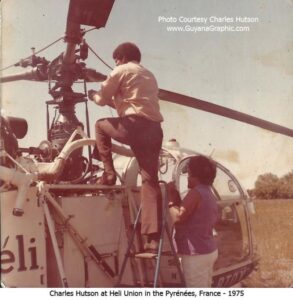
In 1968 I was awarded the R-985 engine licence and completed the airframe licence rating in 1969. That same year the Ramp Operations were moved to Atkinson field and we saw the coming of the Twin Otters.
The period 1969 to 1988 were very intense years with travel, work , type courses and licence examinations as well as a call beyond the normal course of duty, in support of the National Airline in its role in the Rupununi uprising ,the New River Triangle incursion by Suriname and the Ankoko affair with Venezuela.
The combined staff out of the Ramp Ruimveldt and Timehri travelled daily from Georgetown by two large transport buses. At this time I was living in Hadfield Street very close to the Corner of Camp Street where a walk at five o’ clock in the morning to catch the bus at Russell and Sussex streets was a daily activity. In many cases we returned very late at nights having to take care of defects to the C47 fleet of aircraft.
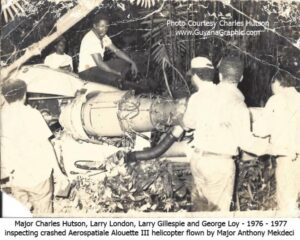
During these years Guyana Airways started handling the incoming BOAC flights out of London, Heathrow and on many occasions we were on duty on the tarmac, awaiting incoming flights during the Christmas and Old year’s night festivities while our wives remained at home.
BOAC offered Ramp training for many of us who were servicing their aircraft, in Trinidad, where they had been operating prior to extending their service to Guyana.
Working at Timehri now exposed us to the C47 and soon the maintenance on this aircraft was mastered where along with the granting of the extension of the airframe licence on the G21A, full coverage on the DC3 was acquired.
Here is a list of the licences awarded to me during the period 1968-1988:
- -Engineers licence #26 issued by the DCA and signed by then Director of Civil Aviation
- Mr. Alex Phillips. (At the time of Issue the Civil Aviation Department and the West Indies were under the jurisdiction of Air Registration Board (ARB UK) guided by the Colonial Air Navigation Order 1953 and its Amendments.)
- Endorsements – Pratt &Whitney R-985 – (1968) – G2IA Grumman Goose (1969)
- Pratt &Whitney R1830 engines (1970) – Dakota C47-(1971)
- Lycoming O- 540-E4C5 (1971) – BN2A Islander (1971)
- Pratt &Whitney PT6-20 (1971) – DHC6 Twin Otter (1971)
- Pratt &Whitney R 2000 Engines (1971) – DHC6 Caribou (1971)
- Astazou 14 Engines (1975) – Alouette SA 319B Helicopters (1975)
- Bell212 Helicopters (1977) – Pratt& Whitney PT6T-3 Engines (1977)
- Sud Alouette SA 319B – Astazou 14 Engines
- , Bell 212 – PT6A Engines
- Bell 412 Helicopters-(1984) – PT6T, PT6T-3B (1984)
- Cat A Para. 5.4 of CAA Notice #10
- Cat C Para. 6.3 of CAA notice #10
- Paras.6.1, 6.2 of CAA AN #10 Paras. 5.2, 5.2.1, and 5.3.1 1988
- CAA AN #10 1988
The series of Endorsements from 1968 through to May 1971 were signed by the Director of Civil Aviation Mr. E. A. Phillips, the DHC 6 Twin Otter and Pratt &Whitney PT6 were signed by Mr. Hutton Griffith on the 26/06/71. Mr. Robert Roberts signed all the other endorsements from August 1971 to May 1977.
The Group Licence was issued on February 7, 1984 and signed by Mr. R. Pierre, the further extension to the Group Licence was also signed by him in April 1988.
This licence was cancelled when the Guyana Air Regulations came into to force in 2004 and was reissued by the Guyana Civil Aviation Authority without inclusion of the endorsements for the Grumman Goose, Dakota C47 and the DHC6 Caribou with their respective engines since these aircraft were no longer on the Guyana Register.
The Guyana Airways Corporation constructed its new hangar shortly after the Ramp Operations moved to Timehri in the early seventies (1971-1972) and opened an operation at Ogle where the Twin Otter was moved and operated exclusively. A small crew consisting of Hamid Ali (Line foreman), Aubrey Henry, Richard Campbell and Steve Wills, semi-skilled mechanics, carried out daily, preflight and (50hr) inspections. At that time too, Texaco had put in place an AVJET refueling installation that the Station crew maintained and served to refuel the Twin Otter. It is during my stay as Engineer in Charge of the Station that the Corporation lost its first Twin Otter 8R-GCP with Captain Walter Dhanraj and Co-pilot Frank Watson, the third crew Mr. Da Silva who miraculously survived the crash and ensuing days in the jungle before he was rescued.
The passenger and cargo, bookings were handled by Mr. Joseph Austin in the startup Operation and later by Mr. Des Graham.
The loss of fellow workers by accident in the line of duty is something grievious to all, but especially to those of us who worked in the industry. These crews were and are our friends, and as Guyanese we admire them for their professionalism as we interact and work as a team in providing a safe means of transport to and from the interior.
This episode is not my first loss of equipment, but it was certainly my first experience with the loss of life by accident through equipment for which I had been the Engineer releasing to service. I learnt very early that no words will ever be enough to offer to grieving wives, mothers and especially children who have lost their father and loved ones. If nothing else, I resolved and indeed that experience strengthened my resolve and commitment to excellence, no tolerance for or excuses for not doing a job to the best of my ability, and an unswerving commitment to remain in Guyana and contribute to the development of my fellow Guyanese.
During my early years at the Ramp Ruimveldt (1963) I was involved very intimately with the rebuild and inspection of 8R-GAU Certificate of Airworthiness, at that time British Guiana had been experiencing political upheaval. Our aircraft were inspected by visiting Surveyors out of the Air Registration Board‘s (ARB) office in Trinidad. That office served the entire Southern region up to and inclusive of Barbados, Jamaica had its own office which dealt with Belize.
That aircraft passed the ARB Surveyors inspection with flying colours and especially in my case I felt a coming of age. As I said before we were going through a very painful period in history and were hosts to a Commonwealth Commission of Enquiry, when in transporting the members of the Commission from Linden, the aircraft landed in the Demerara River and flipped over. The aircraft was piloted by the then Chief Pilot Johnny Wilson, a New Zealander, who on take-off from the airstrip at Linden did not retract the undercarriage , carried out a flawless landing ,but alas, the extended landing gears buried themselves in the water as the aircraft slowed, and acting as a brake, caused the aircraft to rotate about their axes. Fortunately there were no casualties, except to a severe wetting of our guests, but occasioned by the prompt action of the LINE CREW under Tom Persaud.
British Guiana Airways at this juncture had also had in place a training programme to have its aircraft flown by Guyanese nationals, and as I mentioned earlier, my response to a scholarship advertisement by the Ministry of Communications and Works for engineering trainees. Engineer Robert Dornford and Pilots Malcolm Chan-A-Sue, Phillip Jardim, Desmond Ross, Guy Spence, Walter Danraj (deceased), Michael Chan-a-Sue (deceased), Louis Chung, Michael Pacheco and Tony Man-Son-Hing were all returning form Air Work, Perth Scotland, to gain experience and eventually take over the leadership of the Airline’s existing fleet and new additions.
Again, the Airline lost another of its Grumman Goose, when at the virtual end of a day’s shuttles –8R-GAC crashed short of the Kamarang airstrip, this time, piloted by Capt. Guy Spence with Co-Pilot Basant Singh. Invaluable experience and insight was gained by engineering staff during this time in the Airline’ s development, since overnight stay in the interior became a norm in support of the many shuttles that the Grumman was able to do due to its unique role as an amphibious craft. Many engineers enhanced their trade and mastery in aircraft handling and flight characteristics outside of the textbooks, which by and large were extremely rare, and difficult to come by. Indeed, test flights both for Certificate Renewal and in reestablishing the functionality of replaced major components, added to their experience in clearing defects, and improved immeasurably, their interaction with flying crews.
Robert Dornford immediately showed his potential for upward mobility over and beyond the traditional positions of Chief Engineers, and pushed young engineers to meet the challengers offered by the incoming new aircraft types. He spearheaded the opening of the Ogle Operations and by hard work became General Manager of the evolved entity Guyana Airways Corporation. He revolutionized the thinking which said that engineers are best confined to their spanners and grease guns.
With the centralizing of the operations at Timehri and the development of young Guyanese more locals were able to obtain licences, since in the initial start to the industry the skilled staff was mostly Trinidadians. This development meant that GUYSUCO, which evolved out of the Booker Sugar Estates, and in particular its Aircraft Department started to hire locally qualified aircraft Engineers. One of the first was Mr. John Rix (licence #8), followed by Mr. Charlie Dundas one of the first inductees of the then British Guiana Airways, along with Mr. Dharamdas Dhookie who served with distinction until his migration to Canada during the mid-Seventies.
THE YEARS AT THE GDF AIR CORPS- 1975-1988
Mr. Dhookie took the lead in the maintenance of the Airline fleet of aircraft in the seventies 1970-1980 which included the Avro 748, while I was at Ogle and later at the beginning of 1976, when I was seconded to the Army along with Harcourt Browman, Planning and Administrative Engineer GAC, to develop the Army Air Corps aviation capability. In the beginning of 1975 I was sent to France along with Mr. George Loy for a year, to undergo training on the SA319B helicopter, both at the Engine Factory (Turbomecca) in Bayonne and the airframe Factory (Aerospatiale) in Marseille.
Field training and experience were gained working with Heli-Union, a Company that was part of the Helicopter sale agreement to facilitate the (OJT) training and on Helicopters in the South of France, (Pyrenees) and in Paris at their main base and maintenance facility. On my return in late 1975 I was made Superintendent for Helicopter Maintenance and in early 1976 was seconded to the Air Corps Guyana Defence Force.
Mr. George Loy and I became the first Guyanese in 1976 to hold a Helicopter license as well as fixed wing aircraft engineer’s ratings at the same time. Mr. George Loy remained with the Guyana Airways Corporation in his capacity as Chief Engineer and served as the backup signatory while I actively carried on with the maintenance of the helicopters. The Guyana Defence Force had acquired two Alouettes SA 319B for which I had support for a year by a French engineer,who had assembled the helicopters in the French Island of Martinque, and Richard Campbell and Aubrey Henry from the Ogle Operations.
The helicopters were registered under the Guyana Civil Register which called for engineering coverage, and support to satisfy the Regulations as they pertain to aircraft in the Public Transport Category. Later, as the Corps expanded its fleet of Helicopters, the technical support called for swift action to meet this requirement. This took the form of visits to Bristow Helicopters in Trinidad, purchase of their Maintenance Schedule for the Bell 212 helicopter maintenance Schedule to be used as resource document in the development of our own Schedule, a year’s training of Messrs.Richard Campbell and Aubrey Henry with Braniff Educational Systems and two highly trained maintenance personnel from the Jamaican Defence Force.
Meanwhile, the Air Corps was operating its two Islanders, a Helio-Courier and a Beech King Air. The Beech King Air was under the exclusive care of Mr. Clarence Affoo, the Engineer in Charge of the Atkinson field Operations during the period when the Airline operated two bases.
When the new Hangar came into being fully, because it must be remembered that maintenance operations were undertaken in one of the buildings that remained after the Americans withdrew from the Atkinson Field at the end of the Second World War, the Engineering management saw several changes. Mr. George Loy assumed control of the Base operations at Timehri, while Mr. Robert Dornsford took up residence in Georgetown as Engineering Manager. It is at this juncture that the Corporation was able to deploy the services of Mr. Clarence Affoo exclusively to the Beech King Air where he guided the development of Cyril Leacock and Jerome Amsterdam. Both went on to become successful Engineers, Cyril migrated to the West Indies and worked until retirement recently with LIAT and Jerome died after an accident at a Trans Guyana Day of Sports in 1989/1990.
We must remember to pay homage to the many engineers and technicians who over the years prior to the unification of the services to Timehri, their invaluable contribution made to the development of the Aviation industry.
The Timehri base Personnel were:
- Clarence Affoo -Engineer.
- Ted Darwent-Engineer*
- Victor Pinhero-Engineer
- Vivian Pereira-Lead Technician and Master Engine build up specialist
- Leon Barker-Lead Technician/ Engineer
- Carl Harte-Brake and wheel specialist.
- Wishart Fernandes-Lead technician.
- Baney Singh-Vivian’s able Assistant
- Kasbah A stores man with an encyclopedic memory of the C47 parts inventory and an invaluable team member (cook) of repair crews.
Note* I had not met Ted Darwent but heard of him and the work he did on the C47. Wishart Fernandes belonged to that group of individuals who were given OJT, (there were no Aviation Schools) and who developed into first class technicians, masters of the big radial engines and the systems of the Dakota C47. It is a testimony to the expertise that existed in the Aviation Engineering which allowed for the development and nurturing of such unique skills. I pay tribute to such men who were unselfish and who set the highest standards of excellence second to none anywhere in the Industry, it is their dedication to the industry which saw the coming generation of Aircraft Engineers like me, Mr. D. Dookie, Mr. Dundas and many others excel.
Kkasbah* is not this gentleman’s name but believe me he was invaluable, he represented that quality and warmth of humanity that is absent from our Society today. He lived in Soesdyke and my last information is that he had migrated to the USA. Kasbah knew where every item was stored and the part numbers for innumerable items we needed.
There are many more whose names I do not recall but who gave invaluable service to the industry and who by their dedication and sacrifice are responsible for the developments we see today. We stand on their SHOULDERS; I give thanks for their service and for having had the good fortune to have known them.
The Development of The Air Corps Helicopter Fleet
The Guyana Defence Force continued to add helicopters to their fleet, more correctly to replace the Alouettes that were lost through accidents, the first (8R – GEM) which crashed at Loo Creek close to the Linden Highway (1976). The aircraft was piloted by Maj. Anthony Mekdeci who was injured and remained paralysed from his injuries. With him were officers of the Guyana Defence Force who escaped with much fewer injuries.
The other Alouette crashed in the Rupununi Savannahs at Mar Kanata, piloted by the late Capt. Phillip Payne and Ensign Jarvis. The cause of the accident was investigated by a CAA surveyor out of the Jamaican Offices, at the time the United Kingdom Air Registration Board (ARB) had changed its name to the Civil Aviation Authority (CAA UK).
The Rotor Wing Fleet consisted of:
- Two Bell 212
- One Bell 412
- Two bell 206
These airplanes were ferried out of the Dallas, Fort Worth Texas Plant by a team consisting of three American Pilots and one Guyanese Pilot and myself.
The first arrivals were:
- Two (2) Bell 212 (1977)
- Two Bell 206 Long Ranger (1977)
The crews were:-
- Pilots:
- Larry Gillespie
- George Bailey
- Barry Wood
- Larry London
- Engineer:
- Charles Hutson.
The Bell 412 came much later in early 1984 and was outfitted in VIP configuration.
The GDF Air Corps was organized as follows:
- Major L London – Commanding Officer
- Major Charles Hutson – 2IC & O C Engineering.
- Capt. H. Browman – 2IC Engineering
- Lt. R. Campbell – Engineer
- Lt. A. Henry – Engineer
The Avionics and Electrical support came through the personage of Major Everard Burnham (deceased) who was also at a later period seconded to the Air Corps from the Guyana Airways Corporation, but continued to run the Avionics Department of the Airline. Lts. L Chance and N Patrick who received training at AIR WORKS, Perth, Scotland through Government scholarships, were the Electrical Engineers; and like Major Burnham served both the Air Corps and the National Airline as a consequence of their specializations.
Technicians were Sgt. L Whaul, Sgt. Jeffrey and civilian Lakeram Ramsukh who returned to the Guyana Airways Corporation, and in later years became the Senior GCAA surveyor, when that organisation started in transition, from the CAA office in Trinidad in the late 1980s to the early 1990s.
The Fixed Wing was under Capt. S Joseph who later became a Major. He was a very experienced Engineer who along with his skilled staff, ably kept the Fleet of Islanders in tip top condition. Many extensive repairs were carried out under his supervision and active participation, most notable of which, was 8R-GDN at the Matthews Ridge airstrip where the Jones Town mass suicide took place.
My duties with GDF Air Corps focused mainly on developing the Engineering capability of the Army so that it emerged quite self-sufficient, capable of undertaking the many maintenance tasks that it was called upon to execute. Many young persons were afforded both OJT and overseas training, so that on my return to the Guyana Airways Corporation in early August of 1988 the Corps remained strong with both Capt. A Henry and R Campbell firmly in command of the fleet of Helicopters.
My duty also entailed going on missions with the Head of State as a member of the crew and extended to the supervision of the Beech King Air when it was required to undergo heavy maintenance in the United States.
On my departure Major Harcourt Browman took over as Officer Commanding Engineering and finally Commanding Officer of the CORPS when Col. L London resigned from the Defence Force. Col.L London served for a short while as General Manager of Guyana Airways Corporation (1988) and Major Harcourt Browman served with GUYSUCO as Head of the Aircraft Department until 2003.
Col L London migrated to the USA and having successfully gained his Masters in Business Studies started a shipping business in Miami and continues to provide service to his Country up to this time.
Both Capt. A Henry and R Campbell resigned in time from the Air Corps. Richard Campbell continued to provide maintenance services to the Air Corps through a company the two of us formed (1989), the Aircraft Consultancy and Engineering Company Limited from which I relinquished my partnership after some time to facilitate the development of Trans Guyana Airline maintenance, into an Approved Maintenance Organisation. Richard Campbell finally migrated to the United States of America and joined the Garrett Air Research Company in Phoenix Arizona as one of their Quality Assurance Inspectors where he performed with much credit to himself and his profession until his recent illness forced him to resign. Aubrey Henry migrated to the United Kingdom, joined Bristow Helicopters (UK) and rose to prominence within that Company. For years he had been the Engineer in charge of their Africa Operations, indeed, he is at present the Chief Engineer (Nigeria), and whenever needed by his Country both in response to private and the Army needs, he has never failed to give of his time and expertise.
MY YEARS AT TRANS GUYANA, CHL AND CAMS
I joined the Trans Guyana Airline in September of 1988 after a brief stay as Quality Manager on my return to the National Airline (I returned with the rank of LT. COL.), in the post of Assistant General Manager to Mr. Christopher Correia. Trans Guyana Airways operated a fleet of three Islanders and one Cessna 185 on floats.
The Cessna was used primarily in support of the Correia Mining Company operations in Chiti-GO-King, Mazaruni River shuttling men and supplies from Kamarang a fifteen minute flight.
The aircraft (8R-GFJ) was eventually lost on one of its shuttle operations in 1990, piloted by Capt. Mike Rogers the lone occupant who survived without injury.
The CEO M. O. Correia was committed to improving the Airline, and put in effect plans to construct a Hangar. Through these efforts, the declining maintenance capabilities of the Industry in the Country were revived. It is against the background of full migration of skills from Guyana that I had withdrawn from the partnership with Aircraft Consultancy and Engineering Company Limited (ACECL) the Company that Richard Campbell and myself had started, together with the episode resulting from work carried out on Mr. Derek Leung ‘s aircraft 8R-GDL a Cessna 206. Mr. Richard Campbell gamely carried on for some time but eventually joined me at CHL in the capacity of contracted Quality Assurance Manager in moving the Engineering efforts to a reality, thus making it possible to gain Approval from the Aviation Authorities, and therefore, Caribbean Helicopters Limited (CHL) became the first Aviation Organisation as an AMO 1989.(AMO-001)
The Air Corps lost its Bell 212 in very hostile flying environments which tested the very best, the Bell 412, however is still in service today.
At the beginning of my stint with Trans Guyana Airways the engineering staff comprised of one licensed engineer, Muneshwar Singh, who had been the main signatory for all work done on the fleet. On his departure, the Engineer oversight of the daily airworthiness of the Trans Guyana Fleet was Mr. Rex Hamza license #81(ex-GDF SSGT.) who later managed a Caribbean Helicopter Ltd. Team, that provided maintenance support to the Sky van OPS until 1993. There were a number of visiting Engineers who at one time or another provided support for work undertaken by the staff .The TGA staff at the time was headed by Mr. Victor Bianchini, a veteran, and who had been the emissary that made contact with me on behalf of the Correia‘s, when they had started looking for a qualified person to head the aircraft engineering operations. The others, with the exception of Mr. Perry Cyrus, Richard Choo-Yick and a number of up and coming aircraft technicians later to become licensed Engineers, along with Geoffrey Warren and Roy Kadaru both radio and electrical technicians, were persons whose only exposure was on the aircraft at the time operating out of Ogle and owned by the particular Operator they were attached.
The Operators at the time I started working at Ogle were:
- Trans Guyana Airways – Owned by the Correia Family.
- Air services Limited – Owned by A. Mazarally and Sons
- Kayman Sankar Ltd – Owned by the Kayman Sankar family
- Guysuco- (Aircraft Department) Government Corporation.*
The Ogle aircraft Operations began utilizing a private Airstrip developed by Booker Sugar Estates Aircraft Department to service the needs of their sugar plantation and continued with GUYSUCO when the Booker Group Holdings in Guyana were nationalized.
Private operators began renting space and erecting small sheds under the watchful eyes and guidance of the Guysuco Aircraft Department Officials who carried out their tasks with gleeful pleasure, punishing any infringements with immediate and stern destructive action. The private aircraft Operators were quite a hardy breed whose contribution to the continued development of the Interior can never be overstated, and where in time became the life blood to the inhabitants of the interior and mining activities, when the National Airline ceased its operations in the early 1990s.
The environment then that Trans Guyana Airways was operating from, consisted mainly of a covered board walk, where the concreted front of the present CAMS Line Maintenance, passenger and Management offices now occupy, having a small shed at the north east end of its extremity and a small building where the present Control tower and Immigration Services now occupy. This building housed aircraft spares, small office space for Records, stores and management. The building was formally used by the Guyana Airways Corporation cargo and passenger Operations during the 1975 period of the Twin Otter operations.
The 1988 period also saw the CAA (UK) Office in Trinidad becoming very alarmed with the levels of MY expertise in the aviation industry and conveyed the Office’s intention to withdraw support to the CAD and the inspection service they were providing Guyana. The Office’s Surveyors offered invaluable help in working with us to reestablish the level of expertise with which they were comfortable to continue with their oversight. We owe a debt of gratitude to these Surveyors Dave Lelliot, John Saul and Jim Done who, in every way assisted by providing advice and guidance in developing our training school and Maintenance Organisations. They assisted by providing guidelines in the preparation of our Manuals of Procedures, helpful criticisms during the preparations and submissions of the drafts.
Notable help and assistance came from an unexpected quarter in the person of Capt. Malcolm Chan-A- Sue. Although a career pilot, Malcolm, perhaps arising from his early responsibility as Chief pilot of Guyana Airways and interaction with Engineering, started showing great interest in what was developing at Ogle, and in his own inimitable style arrived on the scene with suggestions and help at the most appropriate juncture in the struggle to get the Organisation on its footing.
Here was a situation where one had to start training mechanics from the basics, establish training records, equipping them with the theoretical knowledge and confidence to face an examination to meet the grades set for the Organisation. The staff, along with Mr. R Campbell set about constructing chairs and tables to use in a classroom that was made available at the south eastern end of the present TGA/CAMS line maintenance Hangar. Instructions began using the few Licensed Engineers with Richard Campbell leading the charge.
This is the background from which the first Maintenance Exposition commenced, putting on paper a vision of an Approved Maintenance Organisation, the dream of a few of us who remained in Guyana had been inculcating in our bosom for a long time. It also was born out of a desire to have our own people equipped to be able to handle any maintenance challenge.
The local DCA Office was not equipped to give much guidance; in fact very little advice could have come from that Office as it was not equipped with its own Engineering personnel. The Office in its own way helped, and in conjunction with the visiting Surveyors was gradually moving to participate in this activity as well as to reorganize itself to embrace the new reality that was coming.
Mr. Peter Andrade, a Jamaican Engineer who had been working with Air Services since his arrival in Guyana between 1988 and 1989, joined us at Trans Guyana Airways, and together we spent over a week at Baganara Island, a resort that was in its developmental stage by the Correia Family, putting together the framework for the Exposition. Later, we spent a full two weeks or more at the Correia family’s Business Head Office in Charlotte Street, flushing out the Manual in detail. The final document consisted of over two hundred and fifty pages (250) put together by my Secretary ,at the time, Miss I. Appana, indeed a work of patience and unstinting repetitive labour.
With this ongoing thrust to gain approval and development of the Organisation skills, Malcolm Chan-A-Sue was able to obtain help through the good Offices of the British High Commission to secure the services of an experienced aircraft engineer who had spent quite a number of years as an instructor, working with British Executive Services Overseas (BESO) .Through his efforts we saw many of our technicians gaining licence, and enjoying for the first time in their working life, justifiable grades with commensurate pay. Mr. Jim Campbell laid the foundation for the present Aeronautical School, followed by Mr. William Cottrell and Mr. Floyd Scott. Mr. Floyd Scott is the first Guyanese Principal of the School and under whose tenure the School received its first Approval.
Capt. Malcolm Chan-A-Sue found his niche, and worked tirelessly and unselfishly to develop the Engineering School from its humble beginnings to where it is today, serving the Industry throughout the Caribbean and further afield. The School holds Approvals from the Regional Airworthiness Bodies along with ISO Certifications. To understand this development one has to recognize that in order to embrace the level we aimed for in Caribbean Helicopters Limited (CHL) and later now, Caribbean Maintenance Services Limited (CAMS) the training Institution is an integral part to the maintenance of the approval status of the Aircraft Maintenance Organisation (AMO).
Editor’s Note:
Guyana recently celebrated 100 years in aviation honoring 39 innovators and leaders including 11 pilots, 5 engineers and more than 15 other aviation staffers for more than 20 years of service to the industry. In the midst of those celebrations however, the challenge of re-creating and sustaining a national airline should be foremost on the minds of all.
We must strive to build on the talents and contributions of those pioneers of the aviation industry by soliciting the knowledge, experience and expertise of Guyanese and friends of Guyana scattered across the globe.
The 21st century in aviation must surpass the gains of the 20th century. “If humanity does not evolve it is just a matter of time before we become extinct.”
Editing by Ian G. Hall






